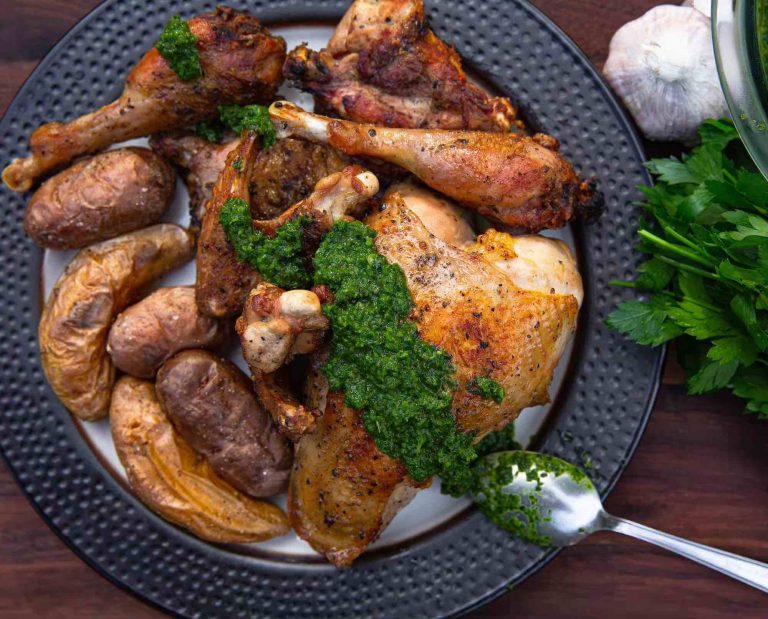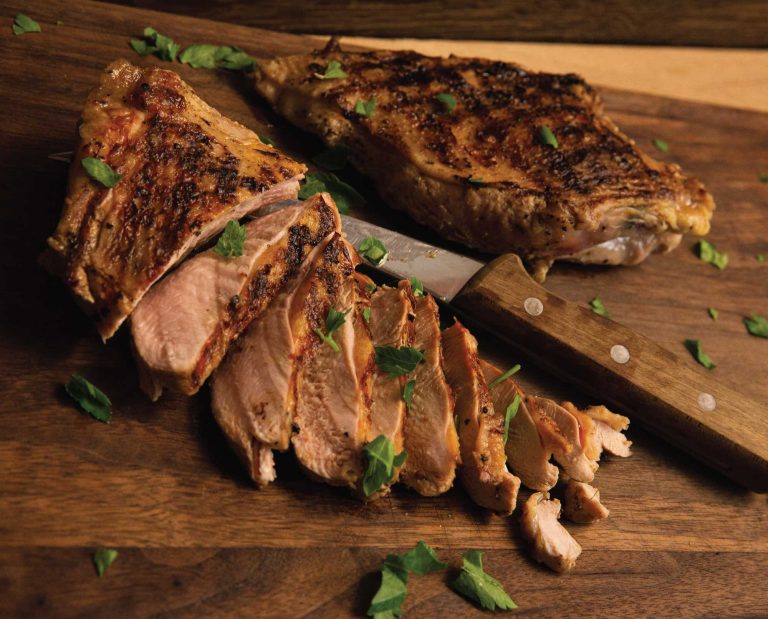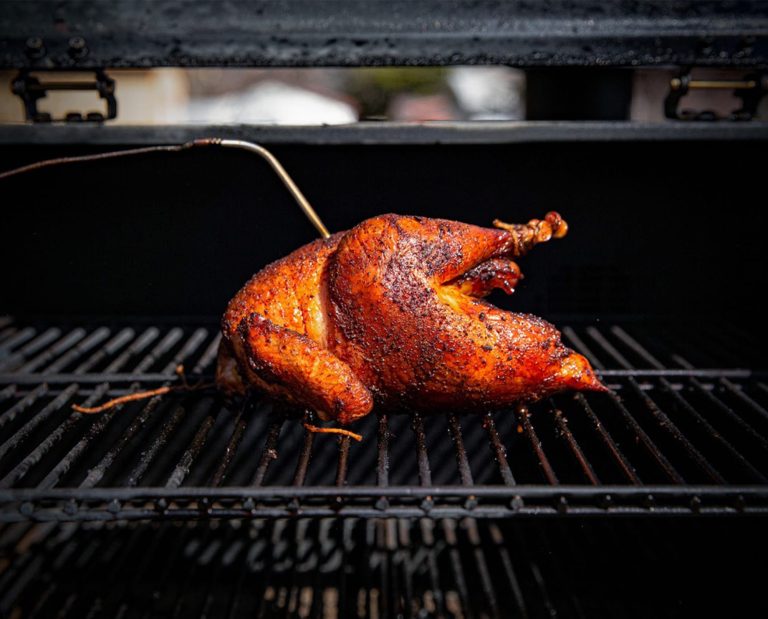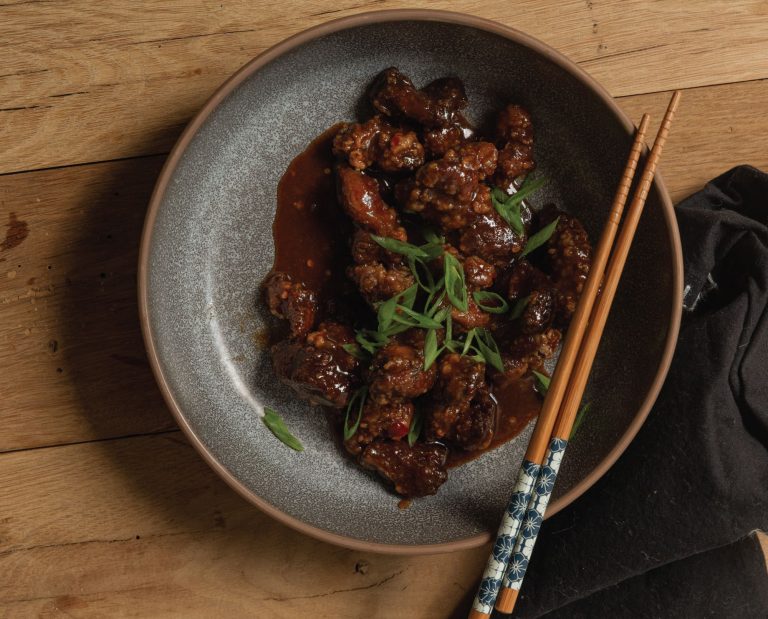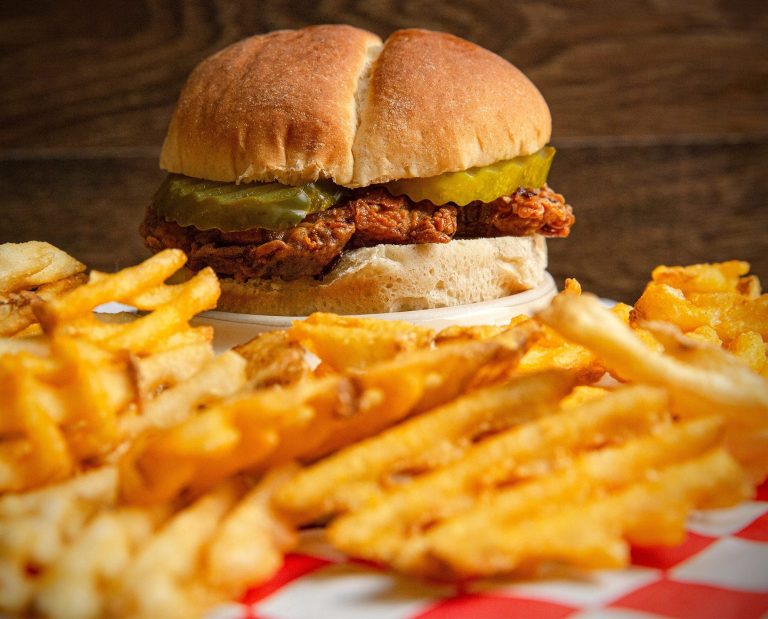How to Dress, Butcher, and Cook Rabbits
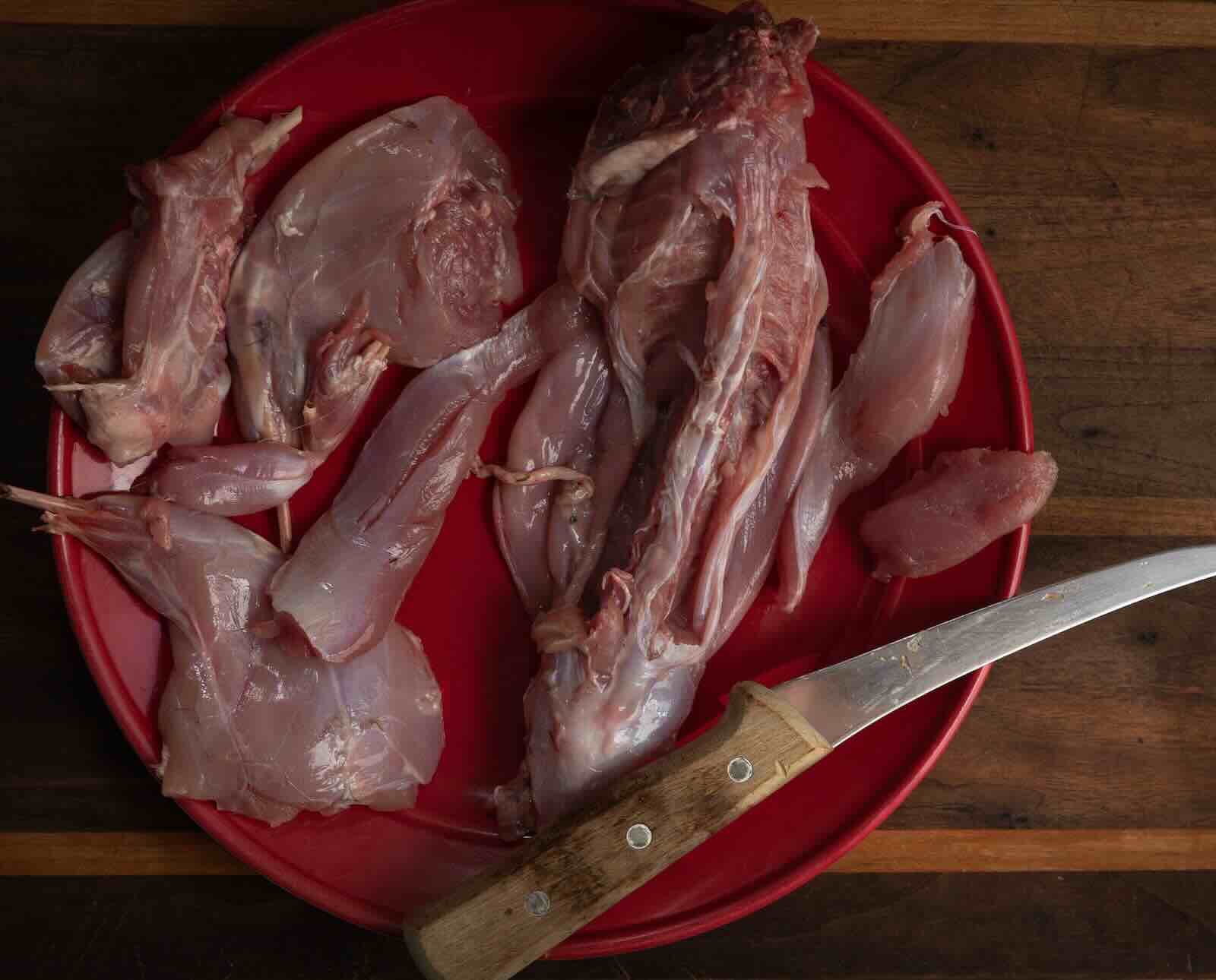
A complete guide to cleaning cottontails and preparing rabbit meat for the dinner table
Recently, I took a late Sunday afternoon stroll back from a hog blind in Texas. Hogless, I followed the trail back to camp when I suddenly flushed a cottontail. Rifle slung over my shoulder, I drew my pistol, telling myself that if it stopped in my path again, I’d take that shot. It did. At seven yards, I was either going to hit the bullseye or miss entirely. With one clean trigger pull, I found myself with a rabbit with every bit of meat pristine and intact.
During my days living in Minnesota, before I owned a bird dog, I participated in more rabbit hunts. However, I peppered them with bird shot. I’ve always enjoyed the taste of rabbit (shot, less so). It’s also incredibly healthy to eat, rich in vitamin B-12, with only 197 calories per 100 grams and 29 grams of protein per serving.
In a lot of states, such as Kansas and Texas, you can hunt rabbits year-round. Be sure to check your state’s rabbit hunting regulations before heading out on a cottontail hunt. Yes, some hunters worry about fleas during warmer months. Those folks may choose to hang the dead rabbit in a cool, shaded area before skinning them. Regardless of what month you’re hunting rabbits, the cleaning, butchering, and cooking is the same year-round. One final note, it’s a good idea to wear gloves when handling rabbits to protect yourself from any pathogens.
Skinning and Dressing Rabbits
Before you skin your first rabbit, know that their hide is incredibly thin and their fur pulls out very easily. When skinning, be careful not to let the fur get on the meat. Not only is the fur likely dirty, but it can give the meat a funky taste, too.
When I skin rabbits, I first cut open the hide with a sharp knife at the center of their spine. Then, I pull the hide in opposite directions to “disrobe” the rabbit. Generally speaking, pulling the hide past the feet requires a bit more fingers than muscle. Once the majority of the hide is removed from the rabbit, I cut off the feet and head and discard them. If you want to get a little wild, you can keep the feet, dry them out with Borax for a couple of weeks, and have four lucky rabbit feet.
After the rabbit is completely skinned, I field dress it as if the rabbit were a deer. Since they’re both mammals, their anatomy is very similar. First, use a knife to carefully open up the rabbit below the sternum, being careful not to puncture the guts. Cut a line down to the exit hole. Just like a deer, make cuts on either side of the pelvic bone and create a route for all innards to go forth. Then, pull out the guts, making sure to remove the kidneys, all the intestines, and other bits from inside. Lastly, thoroughly rinse out the rabbit with clean, cold water. Be sure that the water flows down towards the exit.
Butchering Rabbits
Butchering rabbits is an intuitive activity. Rabbits are most commonly butchered into five parts: two hindquarters, two front shoulders, and its back. Sometimes, the back is cut in half to better fit in a cooking pan and to help keep it flat while it cooks. Otherwise, the front shoulders come off very easily because they are only connected by tissue. Removing the hindquarters is easier if you slice through the meat first, then twist the femur and the hip in opposite directions to release the ball from its socket.
It’s up to you whether you want to use kitchen shears to remove the ribs from the back of a rabbit before cooking it. Yes, there is a bit of meat on those ribs, but not much. If the ribs are removed, the rabbit’s back will be easier to brown in a pan. If you have a fine, sharp knife like a scalpel blade, you can indeed carve and pull off the rabbit’s backstraps instead of cooking them on the bone. Removing the backstraps is much easier to do on larger rabbits. If you decide to cut off the backstraps separately, I recommend doing so prior to removing the front shoulders and hindquarters.
Cooking Rabbits
You can season and cook those strips of backstrap hot and fast for a special treat, but other parts of the rabbit will require some low-and-slow love, something similar to braising, to bring out flavor and to tenderize the meat.
All four quarters can be seasoned and seared, then simmer in liquids such as chicken stock to get the white meat nice and tender. You can even cover the meat with a mix of Coca-Cola and pineapple juice for approximately 2 1/2 to 3 hours, or until tender. You may wish to debone the quarters before doing this, which I’ve found is easiest to do with the meat partially frozen. Otherwise, you’re going to be picking bones out at the end. If you’re like me, you’re always going to miss one and have an unexpected “crunch” while eating later.
Yes, you can indeed sear and simmer the rest of the carcass, or you can roast it and create a stock similar to the recipe here, using rabbit instead of pheasant.
To summarize: cook the loins hot and fast. Everything else, including the front shoulders and hindquarters, gets seared and then simmered in liquids to keep it moist, break down the collagen, and tenderize the meat.
Once the meat is tender, you can either keep it whole, chunk it out, shred it, or dice it. Shredded or diced rabbit meat tastes great in tacos, pasta, or even mixed with mayo and other ingredients for a rabbit salad sandwich or similar dish. You will likely be surprised by how versatile, tasty, and tender rabbit can be when dressed, butchered, and cooked properly.



